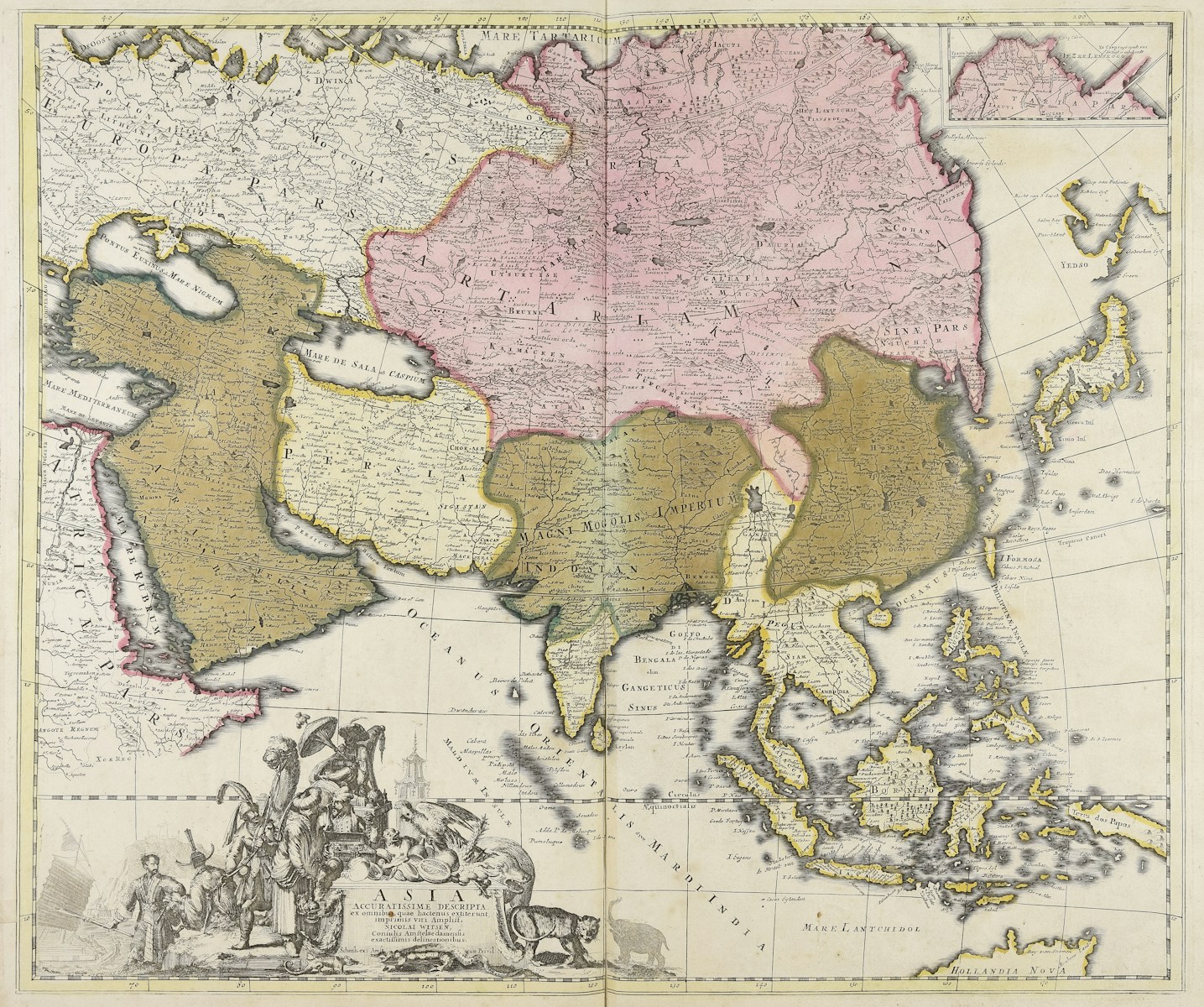
Timeline of major events from The Islamic World: 1000 Years

Long ago, in the deserts of Arabia, no one could have imagined that a vast civilization would rise from scattered nomadic tribes. Then came Muhammad, born in Mecca around 570 CE, who brought a new message of faith and unity. With his migration to Medina, Islam began not only as a religion but as a community, binding tribes under one God. His passing in 632 sparked a question that would echo for centuries: who should lead the Muslims?
The first caliphs, chosen for their closeness to Muhammad, expanded the new empire at lightning speed, stretching from Persia to North Africa. Yet, beneath the victories, divisions brewed. Supporters of Ali, Muhammad’s cousin, claimed leadership belonged to his family. Others disagreed. From this struggle, the great Sunni–Shia divide was born.
The Umayyads turned leadership into dynasty, ruling from Damascus and pushing west into Spain, only to be stopped at Tours. Their power eventually fell to the Abbasids, who moved the capital to Baghdad. There, a golden age dawned: scholars translated Greek wisdom, invented, wrote, and built, while Baghdad became the jewel of the world. But empires fracture. Persian dynasties rose, Shia Fatimids built Cairo, and the Abbasid caliphs became figureheads.
Into this fractured world rode the Seljuks, Turkic warriors who defended Sunni Islam and cracked open Anatolia, paving the way for a new Turkish homeland. Then came the Crusaders, seizing Jerusalem, only to be humbled by Saladin, the Kurdish hero who reclaimed it. Just as Muslims regained strength, a new storm approached from the east – the Mongols. In 1258, they burned Baghdad, ending the Abbasid golden age in fire and blood.
But Islam was resilient. In Egypt, the Mamluks – slave-soldiers turned rulers — defeated the Mongols at Ain Jalut and destroyed the Crusaders. Meanwhile, Mongol descendants themselves embraced Islam, proving conquerors could also be patrons of culture.
From the ashes rose new powers. The Ottomans, beginning as a small principality under Osman, captured Constantinople in 1453, marking the end of Byzantium and the start of a new era. To the east, the Safavids built Shia Iran, and the Mughals carved a glorious empire in India. These three, known as the “Gunpowder Empires,” ruled vast lands, blending cultures, faith, and power. And though centuries later the Ottomans would fall and the Caliphate be abolished, the thousand years that came before had already shaped the heart of the Islamic world and left a legacy that still echoes today.
Here’s a timeline of major events from The Islamic World: 1000 Years
6th–7th Century
- ~570 CE — Birth of Prophet Muhammad in Mecca.
- 610–632 CE — Muhammad receives revelations; Qur’an gradually revealed.
- 622 CE — Hijra (migration to Medina); marks start of Islamic calendar.
- 632 CE — Death of Muhammad; crisis of succession.
Rashidun Caliphate (632–661 CE)
- 632–661 CE — Rule of the four “Rightly Guided” Caliphs.
- Mid-7th century — Rapid expansion: Persia defeated, Byzantine territories lost, empire stretches from Iran to North Africa.
- 656 CE — Assassination of Caliph Uthman.
- 661 CE — Assassination of Caliph Ali → Umayyad dynasty begins.
Umayyad Caliphate (661–750 CE)
- 661 CE — Capital moves to Damascus; dynastic succession begins.
- 711 CE — Muslim forces cross into Iberia (Spain).
- 732 CE — Battle of Tours: Muslim advance into Western Europe halted by the Franks.
- 680 CE — Battle of Karbala; death of Husayn (Ali’s son) becomes defining moment for Shia Islam.
- 750 CE — Abbasid Revolution: Umayyads overthrown (survivors establish rule in Spain).
Abbasid Caliphate & Golden Age (750–1258 CE)
- 750 CE — Abbasids take power; new capital in Baghdad.
- 751 CE — Battle of Talas: Muslims defeat Chinese forces, halting Chinese expansion westward.
- 8th–9th centuries — Flourishing of science, philosophy, translation movement; Baghdad becomes a global center.
- 9th century onwards — Decentralization: local dynasties (Persian, Turkic, etc.) rise.
- 945 CE — Buyids (Shia Persians) control Baghdad but keep Abbasid caliph as figurehead.
- 969 CE — Fatimids (Shia dynasty) establish Cairo as their capital.
Seljuks & Crusades (11th–12th Century)
- 1055 CE — Seljuks (Sunni Turks) take Baghdad, assume real political power, protect Abbasid caliphs.
- 1071 CE — Battle of Manzikert: Seljuks defeat Byzantines, open Anatolia to Turks.
- 1095 CE — First Crusade launched.
- 1099 CE — Crusaders capture Jerusalem.
- 1171 CE — Saladin abolishes Fatimid Caliphate in Egypt.
- 1187 CE — Battle of Hattin: Saladin defeats Crusaders, reclaims Jerusalem.
Mongols & Mamluks (13th Century)
- 1220s–1230s CE — Mongols under Genghis Khan devastate Central Asia and Persia.
- 1258 CE — Hulagu Khan sacks Baghdad, ending Abbasid political power and Golden Age.
- 1260 CE — Battle of Ain Jalut: Mamluks of Egypt defeat Mongols, halting their advance.
- 1260s–1290s CE — Mamluks consolidate power, destroy remaining Crusader strongholds.
Post-Mongol Dynasties (13th–15th Century)
- 1290s–1400s CE — Mongol successor states (Ilkhanids, Timurids) convert to Islam, contribute culturally.
- 1370–1405 CE — Timur (Tamerlane) builds empire across Central Asia, Iran, and India; brutal but culturally vibrant.
Ottoman Empire & Gunpowder Empires (14th–16th Century)
- 1299 CE — Osman establishes Ottoman principality in Anatolia.
- 1453 CE — Fall of Constantinople: Ottomans under Mehmed II conquer Byzantine capital, rename it Istanbul.
- 1517 CE — Selim I (the Grim) defeats Mamluks, captures Cairo, ends Abbasid Caliphate in Egypt; Ottoman sultan claims title of Caliph.
- 16th Century — Emergence of the three “Gunpowder Empires”:
- Ottoman Empire (Middle East, North Africa, SE Europe)
- Safavid Empire (Shia Persia/Iran)
- Mughal Empire (India)
Post-Gunpowder Empires Timeline
Ottoman Empire (16th – early 20th century)
- 1520–1566 — Suleiman the Magnificent: peak of Ottoman territorial, military, and cultural power.
- 1571 — Battle of Lepanto: European Holy League halts Ottoman naval dominance.
- 1683 — Battle of Vienna: failed Ottoman siege marks the end of their expansion into Europe.
- 18th–19th centuries — “Sick Man of Europe”: Ottomans weaken as European powers advance.
- 1924 — Caliphate officially abolished by Mustafa Kemal Atatürk in modern Turkey.
Safavid Empire (1501–1736)
- Founded by Shah Ismail I, establishing Twelver Shia Islam as Iran’s state religion (still today).
- 1588–1629 — Shah Abbas the Great strengthens Iran, expands trade, makes Isfahan a cultural capital.
- 1722 — Safavids collapse after Afghan invasions and internal strife.
Mughal Empire (1526–1857)
- 1526 — Founded by Babur after defeating Delhi Sultanate at First Battle of Panipat.
- 1556–1605 — Akbar the Great expands empire, promotes religious tolerance.
- 1631–1648 — Shah Jahan builds the Taj Mahal.
- 1707 — Death of Aurangzeb → decline of empire.
- 1857 — Indian Rebellion; British East India Company ends Mughal power, establishing direct colonial rule.
Colonial Period & Modern States
- 18th–19th centuries — European colonial powers (Britain, France, Russia, Netherlands) dominate Muslim lands in Asia, Africa, and the Middle East.
- 1918 — After World War I, Ottoman Empire collapses. Middle East divided under British and French mandates.
- 1924 — Formal end of the Caliphate.
- 20th century — Independence movements across Muslim world: Egypt, India/Pakistan, Algeria, Indonesia, etc.
- Late 20th – 21st century — Modern Islamic states emerge; debates around identity, nationalism, and revival of Islamic governance continue.
The sequence is:
Gunpowder Empires (Ottomans, Safavids, Mughals) → European Colonization → Collapse of Ottomans (WWI) → End of Caliphate (1924) → Rise of modern nation-states in the Muslim world.










